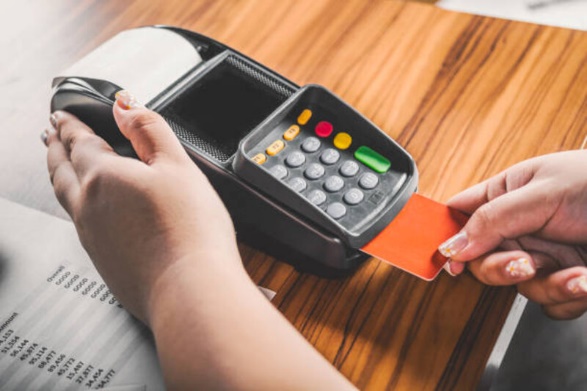Are you familiar with magnetic stripes but need to know how they work? If so, then this blog post is for you! In it, we'll be exploring the world of Magnetic Stripe cards and unraveling their mysteries. We’ll look at what a magnetic stripe card is, how it works, and all the data that can be stored in one of these convenient cards. Finally, we'll discuss some of the risks associated with using them and why regulatory bodies are working hard to ensure consumers are safe. Keep reading to learn more about the fascinating technology behind magnetic stripe cards!
Overview of magnetic stripe cards
A magnetic stripe card, or magstripe card, is a small plastic card with a black strip on the back. The strip contains tiny bits of magnetic material that store cardholder data, such as their name and address, credit or debit card information, and more. By swiping the magnetic stripe across a terminal or reader, this information can then be transmitted to process payments, accessed for membership cards and loyalty programs, or used for any other purpose that requires quick access to relevant data.
As well as being found on everyday credit and debit cards, magstripes can be found on identification documents such as driver’s licenses and passports.
How does it work?
Magnetic stripe cards comprise three tracks, each containing different data.
● Track 1 holds the cardholder’s name, account number, and expiration date
● track 2 contains their account number and an optional PIN code
● track 3 stores of additional information, such as loyalty programs or stored-value cards.
When the magnetic stripe on a card is swiped through a terminal, the reader picks up these encoded pieces of information, which can then be transmitted to the appropriate systems to verify and process payments or access other kinds of data.
Advantages and disadvantages of using magnetic stripe cards:

Advantages:
● Fast and convenient: Magnetic stripe cards offer a fast, easy way to access stored data quickly.
● Widely accepted: Most retailers and restaurants accept magnetic strip cards as payment, making them a very versatile form of payment.
● Low cost: Since they are relatively inexpensive to produce, they can be issued in large quantities at low cost.
Disadvantages:
Security risks: Because the data on Magstripes is static and not encrypted, it’s vulnerable to skimming and other forms of fraud.
Outdated technology: Magnetic stripes are becoming increasingly obsolete as more secure technologies, such as chip cards, become more widely used.
Security measures that are taken to protect users from fraud or theft when using a magnetic stripe card:
The first line of defense against fraud or theft is to ensure that the cardholder checks their transaction details carefully before swiping. This includes looking out for suspicious devices attached to a card reader, ensuring the URL is correct when using an online payment system, and providing that the merchant has verified their identity.
Regulatory bodies such as Mastercard and Visa have also implemented additional security measures to protect users, including 3-D Secure systems, multi-factor authentication protocols, and strict data storage requirements. Additionally, many banks now offer debit cards with built-in EMV chips, which add extra layers of security when processing payments.
What are the common uses for magnetic stripe cards
Magnetic stripe cards have become ubiquitous in our daily lives and not just the primary mode of payment for most people. Beyond their obvious use as debit or credit cards, magnetic stripe cards have countless other applications. Universities often use them as student ID cards, and libraries use them to check out books.
The transportation industry uses magnetic stripe cards for swift and secure ticketing, and hotels use them as room keys. The proliferation of magnetic stripe cards is a testament to their reliability, affordability, and versatility, making them an essential part of our technological tapestry.
How to use a magnetic stripe card securely?

The most important thing is to be vigilant when using magnetic stripe cards. Always check the details of a transaction carefully before swiping, and ensure that no suspicious devices are attached to the card reader. Double-check the URL to ensure it’s legitimate when using an online payment system. Additionally, merchants should verify your identity whenever possible to reduce the risk of fraud or theft.
Regulatory bodies such as Mastercard and Visa also provide additional security measures for users, so make sure you take advantage of these wherever possible. Finally, if you have access to an EMV chip debit card, use that instead, as it offers more robust security protocols than traditional magnetic strip cards.
Conclusion
In conclusion, magnetic stripes offer a convenient way to store and access data quickly. However, they have some security risks due to the static nature of the stored data. As such, regulatory bodies and organizations must take steps to ensure users are protected when using them. Despite this, magnetic stripe cards remain an essential part of our everyday lives and will continue to play an integral role in payment processing in the future!
FAQs
Q: Why are magnetic stripe cards not as secure as chip-based cards?
A: Magnetic stripes store static data, which is vulnerable to skimming and other forms of fraud, whereas chip-based cards use encrypted data, which makes them much more secure.
Q: Can I take any additional security measures when using a magnetic stripe card?
A: Yes! Always check the details of your transaction carefully, ensure no suspicious devices are attached to the card reader, and verify the identity of merchants when possible. Additionally, take advantage of any extra security measures provided by regulatory bodies such as Mastercard and Visa. Finally, if you have access to an EMV chip debit card, use that instead for added protection.



